Hradec Králové and Surroundings
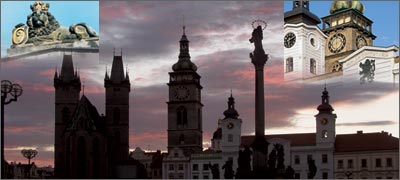 |
Hradec Králové, a regional capital again after ten years, has been since the Middle Ages the natural centre of Eastern Bohemia. Its favourable position on the rise, protected by the confluence of the Elbe and the Orlice, attracted settlers ever since the prehistoric times. Following the Slavonic times of ancient settlement it became a strategic point of support for the tribe of the Croats ruled by the house of Slavníkovci from the nearby Libice nad Cidlinou. During the reign of the house of Přemyslovci its significance increased as the seat of princely administration. The first written mention of the place dates back to the year 1073; in the year 1225 Gradec is mentioned as a town, later to become a dowry town of the Czech queens. |
|
Having freed itself from the humiliating conditions, the Gothic town went through a Renaissance reconstruction when also its second dominant feature - the White tower - was added. The invasions of foreign armies during theThirty Years´ War and numerous fires were disastrous to the living organism of the town and its population dropped rapidly. The creation of the bishopric in the year 1644 and the arrival of the Jesuit order brought the joint consequence of Counter Reformation and of the Baroque building activities. The unique constructions of the church of the Assumption of Virgin Mary, the Jesuit College, the bishop´s residence, the line of canons´ houses, the St. Kliment Chapel, the church of St. John of Nepomuk and many other houses by such prominent architects as G. Santini, C. Lurago, P. I. Bayer and F. Kermer. Another period of decline came after the construction of the Theresian-Josephine fort that started around the year 1765. At that time the old suburbs were destroyed, including numerous monasteries and churches. Outside the fortifications the communities of Nový Hradec Králové, Kukleny and Pouchov were created. Only when the fort was abolished in the year 1884 and the walls pulled down, did the fettered city start to develop once again thanks to the enlightened descendant of the National revivalist J. H. Pospíšil - Jan Ladislav. The grateful inhabitants of the city then had a monument erected in his memory. Pospíšil was followed by JUDr. František Ulrich in the office of mayor who established collaboration with the architects J. Kotěra and his pupil J. Gočár. A unique project of town planning was created and many outstanding buildings were built within that process of modern urban development. J. Kotěra designed the Museum building, the former District House and the Palm garden while J. Gočár continued in the style of functionalism (the complex of school buildings in the Labská kotlina neighbourhood, the Congregational church of Priest Ambrosius, the municipal administration buildings, the District Office building, the School of Engineering building). In spite of the changing political and administrative status of Hradec Králové (the seat of the Hradec Králové region in the years 1949-1960, regional capital of East Bohemia region 1960-1990 and since the year 2000 again the regional capital), its significance as the important cultural and social centre remains unchanged. There are many interesting sights of the area also outside the regional capital itself. The former royal town of Nový Bydžov was founded at the beginning of the 14th century. The unique layout of the city made it possible to proclaim the city centre a protected townscape area. To the west of Hradec Králové there is the town of Chlumec nad Cidlinou known for the tragic outcome of the Peasants´ Rising in the year 1775. The Nativity Scene Museum made the little town Třebechovice pod Orebem known world-wide. Tourists can also admire the romantic neo-Gothic castle Hrádek, located near the little town of Nechanice. |
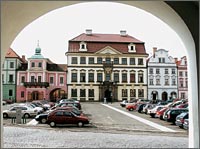 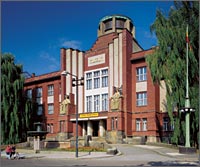 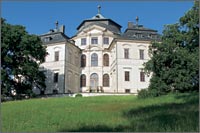 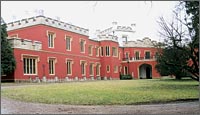 |
Suggestions for sightseeing and visits
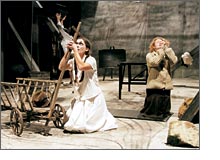 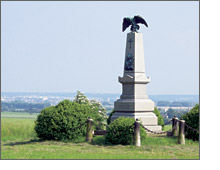 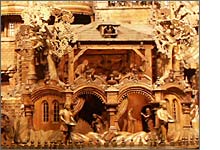 |
The historical Klicpera Theatre is not only a notable regional theatre (twice awarded the title Theatre of the Year) but also the organizer of the annual international festival Theatre European Regions. The puppet theatre Drak has been, during the almost fifty years of its existence, the laureate of numerous festivals, and gave performances in a number of countries in Europe, America, Asia etc. The Gallery of Modern Art presents its collections of painting and sculpture of the 20th century inside the remarkable Art nouveau interiors of a former savings bank. The Museum of East Bohemia is in the year 2002, after several years of reconstruction, returning into the renovated building designed by Kotěra and classified national historical monument. Its collections contain artefacts of periods from prehistory until the exposition of 19th century life-style. A branch of the museum is situated in the centre of the Memorial zone of the Battlefield of the Battle of Hradec Králové at Chlum, and its exhibits document the history of the fatal battle on July 3, 1866. The newly constructed lookout tower provides a view over the battlefield and the surrounding villages, where other monuments, individual graves and graveyards are also situated. In the surroundings of the regional capital there are other remarkable sights. The romantic castle Hrádek near Nechanice was built by the house of Harrach in the spirit of English Windsor Gothic. In Chlumec nad Cidlinou, the birthplace of the dramatist V. K. Klicpera, the house of Kinski had the Baroque castle Karlova koruna built by the outstanding architect J. B. Santini. In the vicinity of the castle at Smiřice there is the Baroque castle chapel (national cultural monument) adapted to serve the cultural life of the community. Among other remarkable places there is the Nativity Scene Museum in Třebechovice pod Orebem housing a unique central exhibit - the mechanical nativity scene made by Probošt - another national cultural monument. The nativity scene was one of the exhibits at the World Exhibition in Montreal. In Nový Bydžov the municiplal museum can offer a wealth of regional collections and a picture gallery. The town takes care of a vast Jewish cemetery, the third oldest one in the country. In Hořiněves a memorial hall was created in the native house of the National revivalist Václav Hanka. A similar memorial hall was set up in memory of František Škroup, the composer of the Czech national anthem, at the vicarage in his native Osice. The reconstructed timbered church at Loučná hora near Smidary is to be used for cultural purposes. The castle Blažkov at Myštěves serves communitarian purposes and a golf course is being built around; in Dobřenice the castle houses a riding school. |